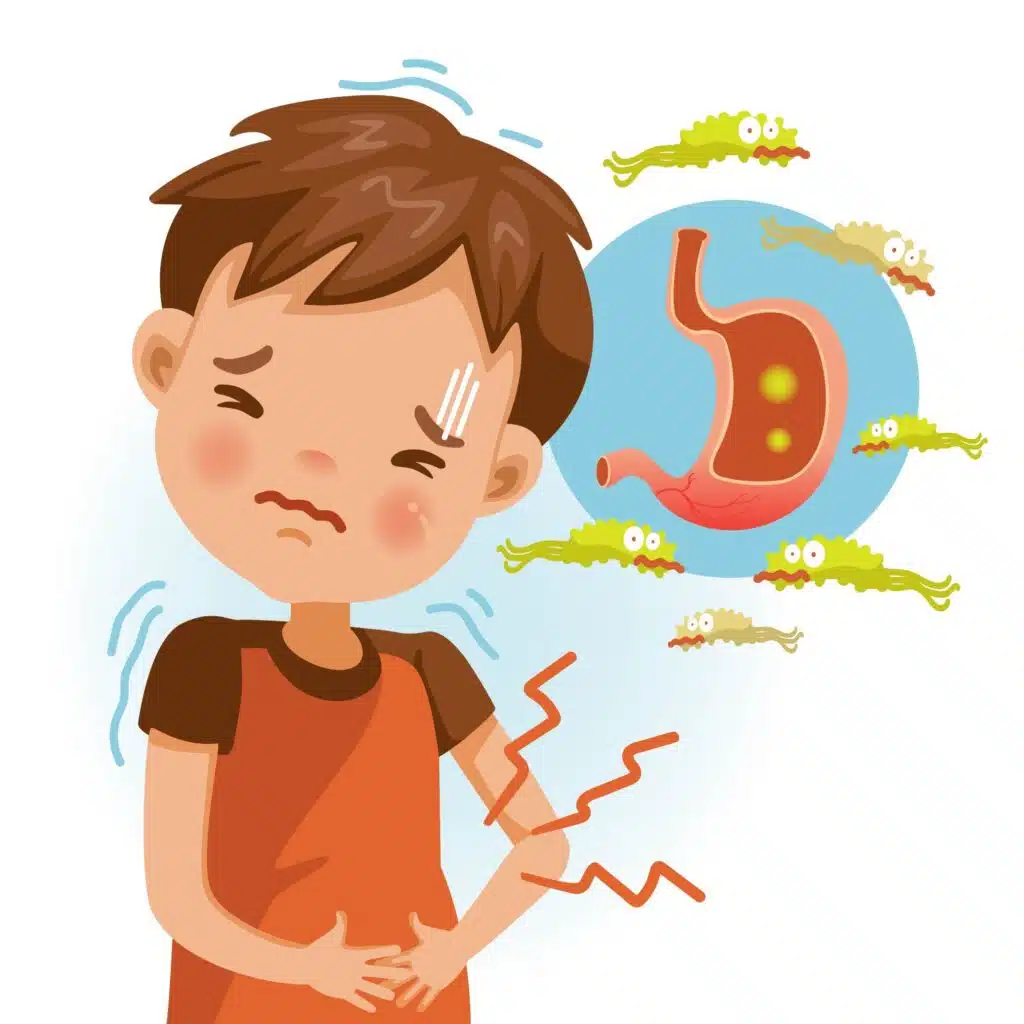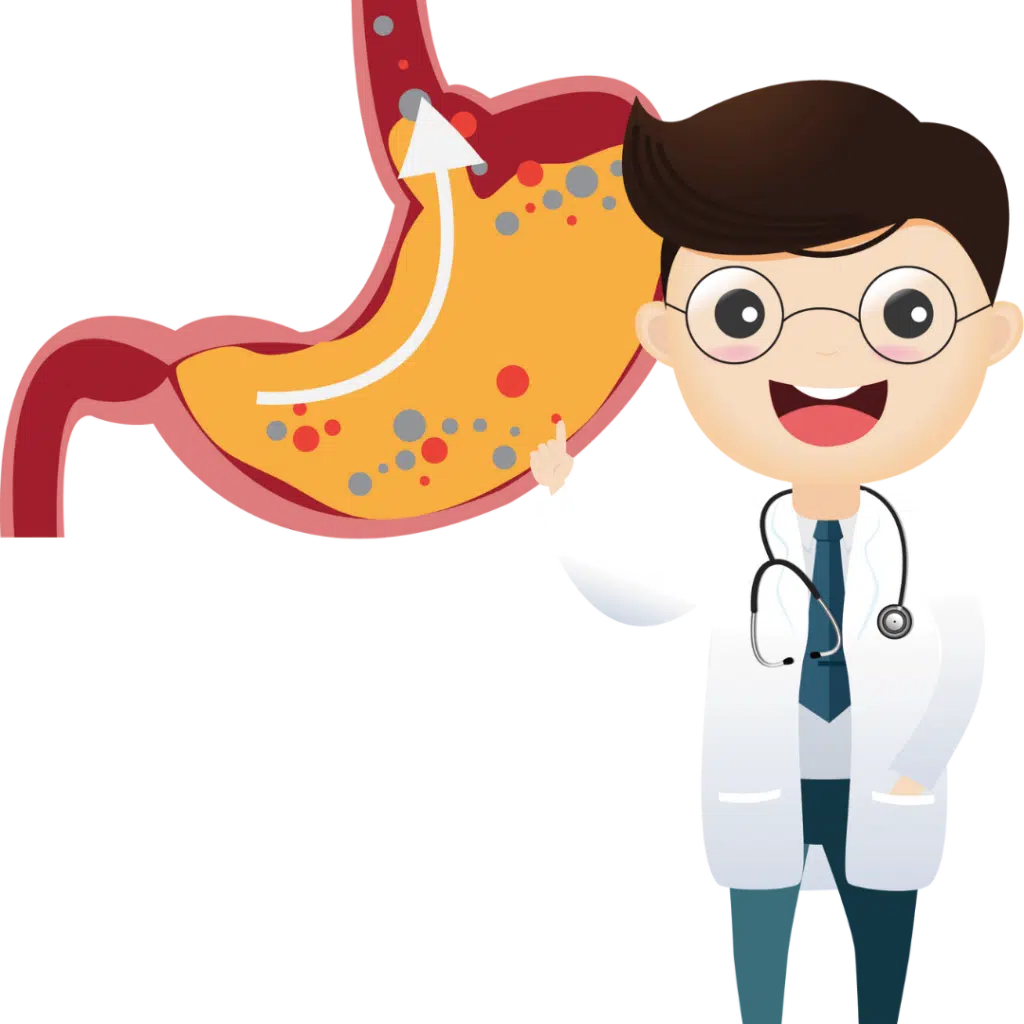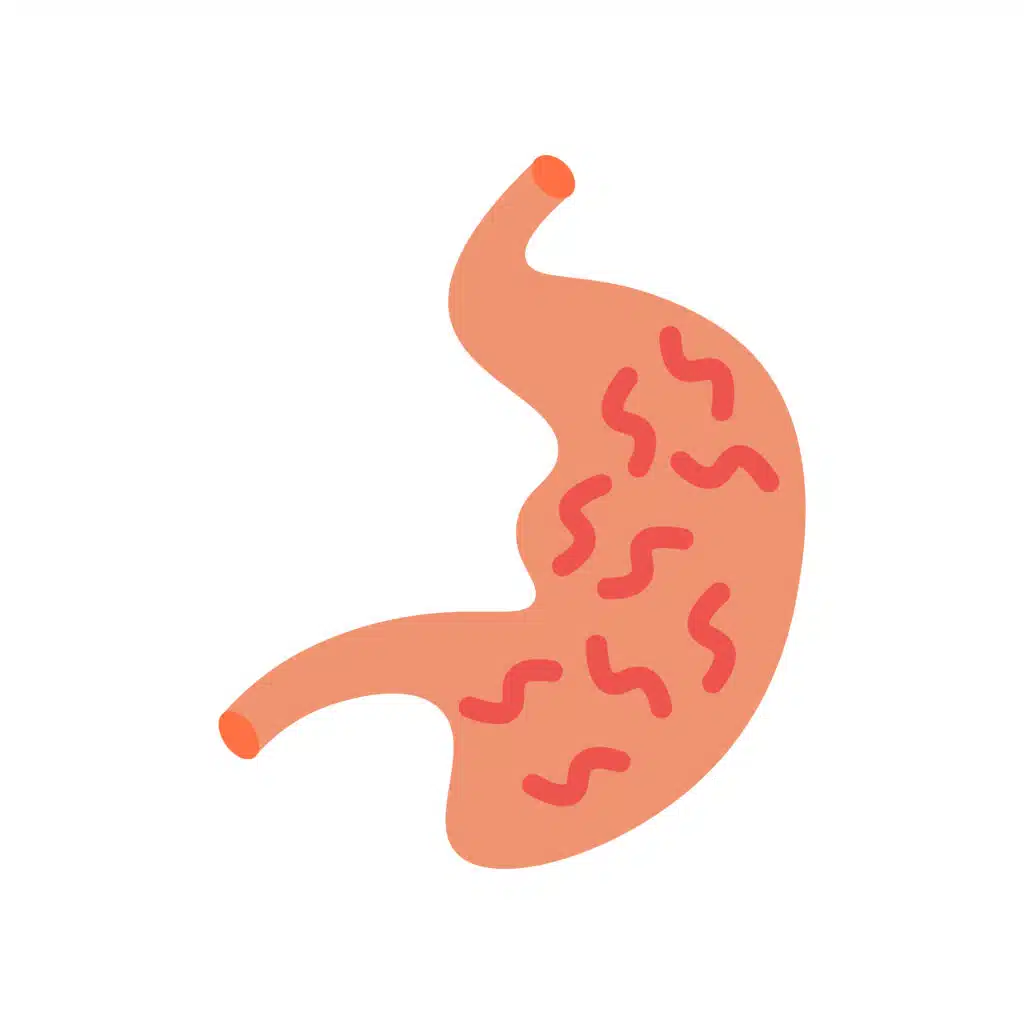Gastroesophageal Reflux Disease
Children’s Digestive Wellness: Nurturing Healthy Tummies
Gastroenterology Specialists for Children in Gainesville, GA
When you consume food, it travels from your mouth through the esophagus and into the stomach. As the stomach begins the digestion process, the partially digested food then proceeds into the small intestine.
Gastroesophageal reflux (GER) occurs when the contents of the stomach, including food, move back up into the esophagus. Gastroesophageal reflux disease (GERD) is a more severe condition where the continuous regurgitation of stomach contents leads to damage in the esophagus or disrupts normal activities such as sleeping, eating, and proper development or growth.
While GER (reflux) and GERD are often used interchangeably, it’s important to note that they represent distinct conditions with varying levels of severity and impact.
What is the Prevalence of Reflux?
Gastroesophageal reflux (GER) is a common occurrence in most otherwise healthy infants. As many as 50% of infants may exhibit signs of GER, such as daily spitting up. However, it’s important to note that the majority of these children do not develop gastroesophageal reflux disease (GERD).
GERD is more prevalent in infants born prematurely, those with respiratory conditions like cystic fibrosis or bronchopulmonary dysplasia, individuals with a hiatal hernia (an opening in the diaphragm), those with neurological impairments, or those who have undergone surgical repair for a birth defect in the esophagus known as esophageal atresia.
Identifying Common Symptoms of Reflux
- Regurgitation or vomiting
- Irritability
- Back arching
- Crying
These symptoms are nonspecific, particularly in children under six months of age. This indicates that the symptoms may arise from various causes and not exclusively from reflux.


Recognizing the Symptoms of Gastroesophageal Reflux Disease (GERD)
Any of the aforementioned symptoms of reflux and/or the following:
- Failure to thrive (insufficient weight gain and growth for the baby’s age)
- Feeding refusal (baby rejects both bottle and breast)
- Presence of blood in vomit (bright red or resembling coffee grounds)
- Noisy breathing during inhalation or exhalation
- Persistent cough
- Recurrent ear infections
If your baby exhibits fussiness, inadequate weight gain, or other indications of GERD, it is advisable to consult with your pediatrician.
Identifying Warning Signs: Symptoms Indicating Conditions Beyond GERD
Contact your pediatrician promptly if you observe any of the following “red flag” symptoms:
- Fever
- Lethargy
- Weight loss
- A rounded or firm soft spot on the head
- Seizures
- Persistent forceful vomiting
- Vomiting at night (when not being fed)
- Green or yellow color to the vomit
- Chronic diarrhea
- Abdominal distention
- Blood noted in diaper
- Breathing problems


Diagnosing Reflux: Methods and Approaches
A medical professional diagnoses reflux by conducting a thorough inquiry into the child’s history through targeted questions and performing a physical examination to eliminate “red flags” and identify potential signs of gastroesophageal reflux disease (GERD)
Unraveling the Diagnosis of Gastroesophageal Reflux Disease (GERD)
GERD also is primarily diagnosed based on a complete history and physical exam.
Other tests may be used to evaluate the amount of reflux or rule out other issues.
These tests may include:
Upper endoscopy: This test is done under anesthesia, which means your child will receive medications to put them to sleep. A gastroenterologist uses a flexible tube with a camera on the end to look at your child’s esophagus and stomach for signs of damage. They may also take small amounts of tissue (called biopsies) to look at under a microscope.
pH or impedance probe: This test is usually done together with an upper endoscopy but can be done on its own. The test takes 18–24 hours, so you may need to stay in the hospital overnight. A thin, flexible tube is passed through your child’s nose and down to where the esophagus and stomach meet. The tube is then hooked up to a monitor to measure how often reflux happens. You will be asked to keep track of your child’s feedings and symptoms to help interpret the test results.
Upper GI: In this test, your child will be given a liquid to drink via bottle. This liquid can be imaged to allow a radiologist to examine the esophagus, stomach, and beginning of the small intestine.
Supporting Your Baby with Gastroesophageal Reflux (GER)
Establishing a Feeding Routine:
Create a consistent feeding schedule for your baby.
Provide Smaller, More Frequent Feedings:
Opt for smaller and more frequent feeding sessions.
Burp More Frequently:
Incorporate more frequent burping during and after feedings.
Stick to a Regular Feeding Schedule:
Maintain a regular feeding schedule for your baby.
Separate Feedings:
Ensure a time gap of at least 2–2:30 hours between the start of one feeding and the beginning of the next.
Stop Feeding after Spit-Up:
Cease feeding once your baby has spit up.
Avoid Tight Diapers or Waistbands:
Opt for loose diapers or waistbands to minimize spitting up.
Minimize Exposure to Secondhand Smoke:
Keep your baby away from secondhand smoke.
Keep Baby Upright:
Ensure your baby remains upright for at least 30 minutes after a meal.
Limit Use of Car Seat at Home:
Avoid using your baby’s car seat while at home.
Discuss Thickening Formula:
Consult your pediatrician about using a thickening formula with cereal to reduce spitting up.
Note: Breast milk cannot be thickened, as it contains enzymes that digest the cereal.


Approaches to Treating Gastroesophageal Reflux Disease (GERD)
We recommend a stepwise approach to treating GERD:
First-line treatment:
Avoid overfeeding by reducing the amount at each feeding.
Feed more often.
Consider using thickening formula with rice cereal.
Concerns about arsenic in rice: The FDA has set limits on arsenic levels in infant rice cereal since 2016. Rice cereal is preferred for its thorough dissolution, affordability, and non-clogging properties in bottles. Opting for rice cereal with low or no arsenic is advisable.
Carob bean (locust bean) thickeners are approved for infants after 42 weeks gestation and can be used in breast milk.
Second-line treatment:
Eliminate cow’s milk from your baby’s diet (or from the mother’s diet if breastfeeding). This is typically achieved with a protein hydrolysate or amino acid-based formula for 2–4 weeks.
Third-line treatment:
Consider a referral to a pediatric gastrointestinal provider for further evaluation.
If referral is not feasible, a 4–8-week trial of acid suppression is recommended. If symptoms improve, medication is gradually discontinued to assess if symptoms return.
Seeking Support for Myself and Family in Coping with GER and GERD
Remember, you’re not alone in this journey.
- Crying is a normal part of a baby’s development. On average, a 6-week-old baby may fuss or cry for over 1 hour per day, and up to 35% of babies may fuss for more than 2 hours per day. This tends to improve as babies grow older, with most crying less than 1 hour per day by three months of age. It’s important to note that not all crying or fussiness is necessarily related to GER or GERD.
- Establishing good sleep habits for both you and your baby is crucial. Whenever possible, try to nap when they nap. Consult with your pediatrician to explore sleep strategies that suit your family.
- Don’t hesitate to ask for help. While assistance may not always be available, if there’s someone who can lend a hand, consider seeking relief for a few hours or assistance with a night feeding.
- Remember, there’s no such thing as a perfect parent. Parenting involves trial and error, and what works for one family may not work for another. It’s okay to give yourself a break and let your baby have a few minutes alone to see if they can calm themselves.
- Coping with reflux is a collective effort, and everyone in the family needs to feel acknowledged. Spend quality time with older children, allowing them to express their feelings about having a new sibling who may require more attention. Also, dedicate time to connect with your partner or friends.
- Prioritize self-care by finding at least 30 minutes a day to focus on yourself.
- If you experience symptoms such as tearfulness, fatigue, insomnia, or persistent feelings of loss lasting more than 10 days after childbirth, or if you notice two weeks or more of increased crying, low energy, feelings of sadness or hopelessness, and decreased interest in activities you once enjoyed, please talk to your healthcare provider or a mental health professional about postpartum depression.
Brief Highlights
- GER (reflux) is a common occurrence in infants. The muscle preventing GER matures as babies age. Spitting up typically peaks at 4 months, and in most cases, infants cease this behavior by 12 months.
- GERD arises when reflux leads to symptoms that disrupt growth, development, or sleep.












